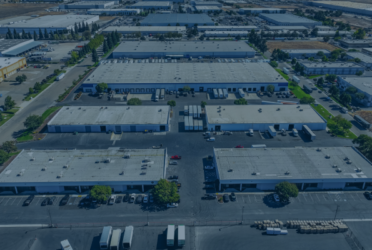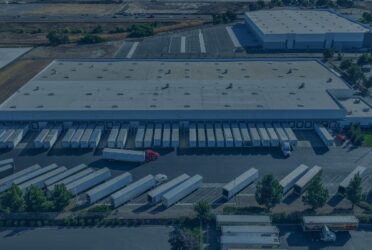Multi Family Real Estate Investing

1 Multifamily Real Estate Investing
1.1 What is multifamily real estate investing?
1.1.1 Types of multifamily real estate investing
1.2 Multi family real estate investing strategies
1.2.1 Multi family real estate investing for beginners
1.2.2 Small multifamily investing
1.3 How much money do you need to invest in multifamily?
Those are just a few of the benefits multifamily property has to offer. There are certainly others. In this article, we take a closer look at multifamily real estate investing—including a look at how to get started investing in multifamily property regardless of your income level.
Read on to learn more.
What is multifamily real estate investing?
Multifamily real estate investing is when an individual, or group of individuals, purchases a residential property with two or more units. The property is then leased to tenants whose rent payments cover the taxes, insurance and other costs associated with running the property. Multifamily real estate will generally have strong cash flow which is then divided amongst investors. Ideally, the property will also appreciate in value during the investors’ hold period, which is another way multifamily real estate can generate profit for those who have invested.
Types of multifamily real estate investing
There are many types of multifamily real estate investments, which is one of the reasons it appeals to so many individuals. The smallest types of multifamily property are two-unit homes, sometimes referred to as “duplexes”. The owner may or may not live in one of the units and rent the other. A true investment property would have both units leased in order to maximize the cash flow.
Multifamily real estate then begins to scale in size and value. Many people will begin by investing in a 10- or 20-unit apartment building. More adept investors might purchase 50- or 100-unit properties. Most will find, however, that there tends to be greater efficiencies (operationally) when buildings start to have 200+ units. It is not uncommon for apartment communities to have hundreds, even more than a thousand, individual units are part of the development project.
Multifamily real estate investing also includes several niche products, such as student housing and age-restricted housing (e.g., for those aged 55+).
Multi family real estate investing strategies
There are a few especially popular multifamily real estate investment strategies, including “fix and flip,” “buy and hold” and “value-add” real estate investments.
The fix and flip real estate investment strategy is best deployed among those with a general contracting background and at properties of smaller scale. Some investors will purchase a small multifamily building in need of cosmetic improvements. Once these improvements have been made (e.g., new flooring, fixtures and appliances), then the owner will lease each unit for a premium. Shortly thereafter, the owner will sell the property for a profit – profits that may be subject to hefty short-term gains taxes depending on the final length of the hold period. For those who have the contracting acumen, this can be a great way to earn income from multifamily real estate investments (but there is nothing passive about fix and flip investments).
An alternative approach is to “buy and hold” an already stabilized asset. An investor may have intentions of making property improvements over time, but they have a long-game strategy in mind. As long as the property is cash flowing as-is, they can take their time making improvements as those improvements are warranted. Many buy-and-hold investors will hold a property for at least five years; others hold property indefinitely.
Somewhere on the spectrum between “fix and flip” and “buy and hold” are those who pursue value-add real estate investment strategies. Value-add strategies usually involve some degree (either heavy, light, or somewhere in between) of property improvements during the early years of ownership. Property improvements, which may be physical and/or operational in nature, can be done all at once or gradually as units turn over. In either event, the owner is not usually looking to turn a quick profit, but rather, to make the improvements necessary to really maximize the asset’s long-term value. The owner may then refinance the property at a lower rate and then hold the property until an opportune time to sell.
Multi family real estate investing for beginners
Anyone who is considering investing in multifamily property for the first time will want to consider several factors, including, but not limited to:
- How much money do you have to invest? People can invest in multifamily real estate with very small sums of money (sometimes at little as $5,000). Depending on how much someone wants to invest in a single deal, the types of multifamily properties they will want to consider will vary.
- How much time do you have? This is important because you can invest in real estate as either an active or passive investor. Active real estate investing requires your time, your capital, and your resources. You will be responsible for the day-to-day management of the property, including decisions about paint colors and landscaping. This is in addition to the big-picture responsibilities about how to finance a property, when to refinance, business plan and asset management strategies and more.
Individually, these might not seem like big decisions, but collectively they can have a significant impact on the profitability of an investment. Therefore, unless someone is keenly familiar with the real estate industry (or has the time to learn), passive real estate investing is generally a preferred approach.
Passive multifamily real estate investing is when someone invests in a syndication, fund, real estate investment trust (REIT) or other vehicle that is spearheaded by an adept sponsor who oversees the property on investors’ behalf.
- What is your risk tolerance? It is important for any investor to consider their personal risk tolerance, as this will influence how, where and with whom to invest.
Someone who is risk adverse may opt to invest in already stabilized, cash flowing multifamily real estate located in core markets. Investors can expect returns to be correlated with risk – the lower the risk, the lower the returns a deal will likely generate. Therefore, someone who has a higher risk tolerance might instead pursue multifamily real estate that requires more work. There are varying degrees of value-add properties, from those that need light renovations to those that need to be gut-renovated.
The riskiest of all deals are multifamily development projects, which require you to go through both permitting and construction processes – both of which can carry several unknowns – before property leasing and eventual stabilization can occur. With multifamily real estate development, it can be several months to years before investors earn any return on their capital investment.
As noted above, the smallest type of multifamily property is a duplex with just two units. These two units will be separately leased but housed under the same roof. In urban areas, it is common for two-family properties to be stacked on top of one another—with one unit occupying the ground floor and the second unit occupying the second (and perhaps third) floor. In suburban areas, duplexes often take the form of two identical units positioned side-by-side to each other under the same roof.
Duplexes may or may not have shared systems, like HVAC units and hot water heaters. If the utilities are not on separate systems, it is difficult for the owner to determine how much each unit is consuming and therefore, what they should be paying for utilities. In situations like these, the landlord may cover the cost of the utilities and then charge a rent premium since the utilities will be included in that price.
How much money do you need to invest in multifamily?
Another benefit to investing in multifamily real estate compared to other property types, like office or retail, is that the barriers to entry are rather low. Someone can begin investing in multifamily real estate with as little as $5,000 (sometimes, less!). This is true whether they decide to invest in a small multifamily property on their own, or as a passive investor in a syndicate, fund or REIT. In fact, individual REIT shares often trade for less than $100 a piece, which makes this investment vehicle a great option for those with little means who are otherwise eager to begin investing in real estate.
That said, most professional real estate sponsors will look for investors to make a more substantial contribution – usually, this means an equity investment of at least $10,000 or $50,000. Sometimes, a deal requires someone to invest at least $100,000 and may require investors to be “accredited”.
To be an accredited multifamily investor, an individual must earn at least $200,000 per year (or $300,000 if married) or have a net worth of at least $1 million (excluding their primary residence). Accredited investors usually have the most options when pursuing various multifamily real estate investment opportunities.
How to analyze multifamily investment opportunities
For those who are looking to invest in real estate, there is no shortage of multifamily properties to consider. Given the breadth of investment opportunities, learning how to analyze individual deals is especially important. Here are a few things for investors to consider as they pursue the multifamily opportunities before them:
- Demographics: It is important to understand the demographic profile of those living in the area in which a property is located. Is the population base expanding or contracting? What is the average median income? What is the median household age? Demographics play a major role in determining the demand for housing, especially certain types of multifamily housing, and should be considered closely when analyzing a multifamily investment opportunity.
- Economic drivers: It’s also critical that you understand what’s driving the local economy. First off, is the local economy expanding or contracting? And second, is there industry and/or employer diversification? Ideally, a multifamily building will be located in an area experiencing economic growth. Similarly, industry and employment diversity is important – especially for longer-term, buy and hold investors. Those who had invested in the Rust Belt during the auto industry’s heyday know all too well how over-reliance on a single sector can create financial ruin if that industry starts to decline.
- Submarket considerations: Multifamily real estate tends to operate at a hyper-local level. Two similar properties located just blocks away can perform drastically differently. For example, a suburban community that has exceptionally high-performing schools may continue to attract demand even if there’s no significant employer or industry bringing people there. Similarly, a neighborhood located within walking distance to reliable public transit may be considered more desirable for multifamily housing than the next neighborhood over if the latter does not offer the same degree of walkability.
- Competition: Too often, multifamily investors fail to research their local competition. On a standalone basis, a property might seem like an attractive investment opportunity. However, when put into context of existing and future competition, that investment may lose some of its luster. For example, the in-place cash flows at a 50-unit apartment building may seem strong. At the moment, vacancy rates at that apartment building are also sub-5%. However, a new 200-unit apartment building is planned less than a quarter-mile away. That building plans to offer substantial incentives (e.g., two months’ free rent) for those willing to sign a lease within the next year. An investor who hasn’t acknowledged this competition may be in for a rude awakening if their tenants start to leave for the new building as units begin to come online.
Anyone who is considering investing in real estate will certainly want to consider getting started with multifamily. Multifamily real estate investing is highly relatable—most people understand how units are laid out, leased, and rented on an ongoing basis, since most people have rented an apartment of their own at some point in time. There is a much smaller learning curve than investing in other commercial real estate product types, which means people who want to invest can get started as soon as they’re ready.
What’s more, the opportunities to invest in multifamily real estate are growing at a rapid pace. The advent of online crowdfunding has made it easier than ever for sponsors to raise capital. Now, it’s up to you, the investor, to identify the partner whose interests are most closely aligned with your own. Once you’ve done so, the opportunities will be endless!
Are you ready to start multifamily real estate investing? Contact us today to learn more about our experience, investment philosophy, and the deals we have in our pipeline.











 Podcast
Podcast